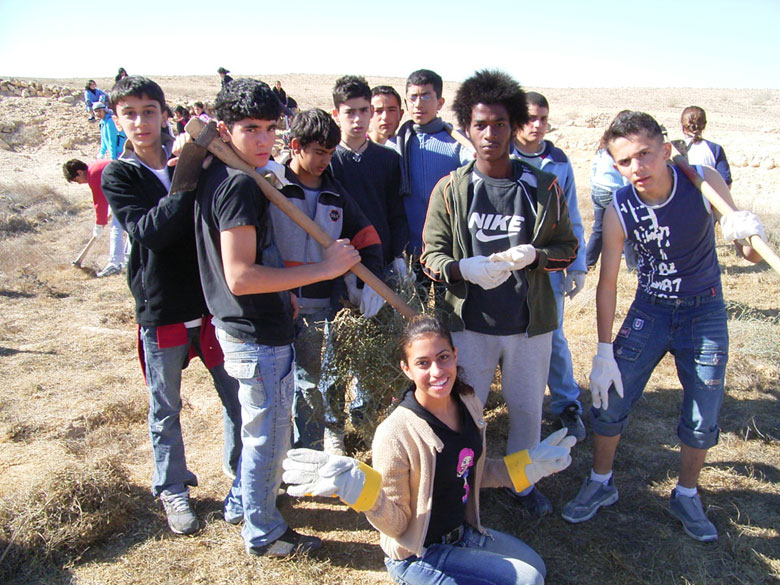 |
 |
The ADASR project continues into 2005 as it was originally conceived. It began as a combined archaeological and environmental study focused on the arid regions of Israel, most notably the Negev, starting with the desert community of Nitzana near Israel's border with Egypt. As we began working with various elementary and high school students and their teachers, they, by their enthusiasm and excitement, demanded that we expand our activities to include them in the decision making process in regards to the preservation of the archaeological sites.
The project took on a greater dimension as it emerged from its grass roots origins. Starting even from an elementary school level, this became an opportunity to enrich the students with something they could immediately experience and influence in a positive way.
Since these children live and go to school in the very regions of the archaeological sites, environmentalism began to be involved with archaeology and geology. Suddenly this was all about preservation of the natural and ancient environment.
At this time we have five schools throughout the region already involved, and five more lining up. Teachers and educators are realizing that our new "environmental conservancy" is cultivating an interest on the part of the students in fields such as geology, environmental sciences, archaeology, agriculture, animal husbandry, and horticulture.
The students participate in scientific experiments by observing rainfall, soil erosion, and the effects of runoff from the rain as part of the study of the ancient agricultural sites. The students observe natural water systems, the wadi flows, and how the water flows affect the cisterns and the wells which stored and supplied water in their own communities in ancient times.
The students study the ancient agricultural fields doing archaeological surveys, looking for new sites. They learn about the desert area, the animals, and the vegetation.
In 2005 this work has continued through the winter where a farm maintenance project with students includes overturning of the soil, getting rid of bushes and brush, cleaning up the area, and planting. These kids at Nitzana High School are having fun, while taking care of their historic environment.
Young Israeli soldiers serving in the desert who were on duty in the Negev, also help to rejuvenate the Negev ancient agricultural installations. The soldiers join with the high school students and staff to help plant new trees near an ancient agricultural terrace.
As these young people grow up, will they destroy the ancient agricultural sites, or will they build their towns and cities around them, preserving and conserving the past for their children? Will they pursue careers in higher education that will grow out of this enriching experience?
2005 Field Project at Nitzana
As a result of our initial work at Nitzana, plans are being made to build around the sites so that a future town will grow up in the midst of this ancient agricultural park, and these children will see the result of their "environmentalism" all around them.